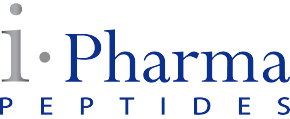GHK-CU FOR HAIR AND SKIN
GHK-Cu is a naturally occurring copper complex that was first identified in human plasma, but has recently been found in multiple locations such as saliva and urine.
GHK-Cu has a variety of roles in the human body including promoting activation of wound healing, attracting immune cells, having anti-oxidant and anti-inflammatory effects, stimulating collagen and glycosaminoglycan synthesis in skin fibroblasts, and promoting blood vessel growth.
Evidence has shown that it acts as a feedback signal that is generated after tissue injury. It seems to act as a potent protector of tissue and it is an anti-inflammatory agent that controls the oxidative damage that occurs after tissue injury. Further, it then plays a big role in signaling tissue remodeling which removes damaged/scarred tissue and generates new, healthy tissue.
These positive effects decline with age because the concentration of GHK-Cu in the body decreases with age.
Benefits of GHK-Cu
- Tightens loose skin and reverse thinning of aged skin
- Repairs protective skin barrier proteins
- Improves skin firmness, elasticity, and clarity
- Reduces fine lines, depth of wrinkles, and improve structure of aged skin
- Smooths rough skin
- Reduces photodamage, mottled hyperpigmentation, skin spots and lesions
- Improve overall skin appearance
- Stimulates wound healing
- Protects skin cells from UV radiation
- Reduces inflammation and free radical damage
- Increases hair growth and thickness; enlarges hair follicle size
GHK-Cu Research
Since GHK-Cu plays an important role in skin biology, it is widely used in cosmetics as a reparative and anti-aging ingredient.
GHK stimulates both synthesis and breakdown of collagen and glycosaminoglycans and modulates the activity of both metalloproteinases and their inhibitors. It stimulates collagen, dermatan sulfate, chondroitin sulfate, and the small proteoglycan, decorin. It also restores replicative vitality to fibroblasts after radiation therapy. The molecule attracts immune and endothelial cells to the site of an injury. It accelerates wound-healing of the skin, hair follicles, gastrointestinal tract, and boney tissue. In cosmetic products, it has been found to tighten loose skin and improve elasticity, skin density, and firmness, reduce fine lines and wrinkles, reduce photodamage, and hyperpigmentation, and increase keratinocyte proliferation.
GHK-Cu FACIAL STUDIES
Copper peptide GHK-Cu is widely used in anti-aging cosmetics (INCI name: Copper tripeptide-1). Several controlled facial studies confirmed the anti-aging, firming and anti-wrinkle activity of copper peptide GHK-Cu. Abdulghani et al. established that facial cream containing GHK-Cu increased collagen in photoaged skin of 20 female volunteers, performing better than vitamin C and retinoic acid. Leyden et al. conducted 12 weeks facial study of GHK-Cu containing face and eye cream, reporting significant improvement of skin laxity, clarity and appearance, reduced fine lines and the depths of wrinkles and increased skin density and thickness comparing to placebo. GHK-Cu eye cream performed better than vitamin K cream. Finkley et al. conducted 12-week facial study on 67 women and reported that GHK-Cu cream applied twice daily improved aged skin appearance, increased thickness, reduced wrinkles and strongly stimulated dermal keratinocyte proliferation as determined by histological analysis of biopsies. The same study found copper peptide GHK-Cu to be non-toxic and non-irritating.
HAIR GROWTH BENEFITS OF GHK-Cu
Copper peptide GHK-Cu and its analogs were found to strongly stimulate hair growth. The efficiency of synthetic analog of GHK-Cu was similar to that of 5% minoxidil.
Conclusion
GHK-Cu can promote activation of wound recovery, appeal of immune cells, antioxidant and anti-inflammatory consequences, stimulation of collagen and glycosaminoglycan synthesis in pores and skin fibroblasts and merchandising of blood vessels increase.
GHK is a safe, extensively studied compound that has a wealth of positive and health-promoting effects in many tissues and systems. It has been widely used in anti-aging and cosmetic products in humans for decades without any adverse effects and can be easily incorporated in creams, liposomes, foams or subcutaneous injections.

